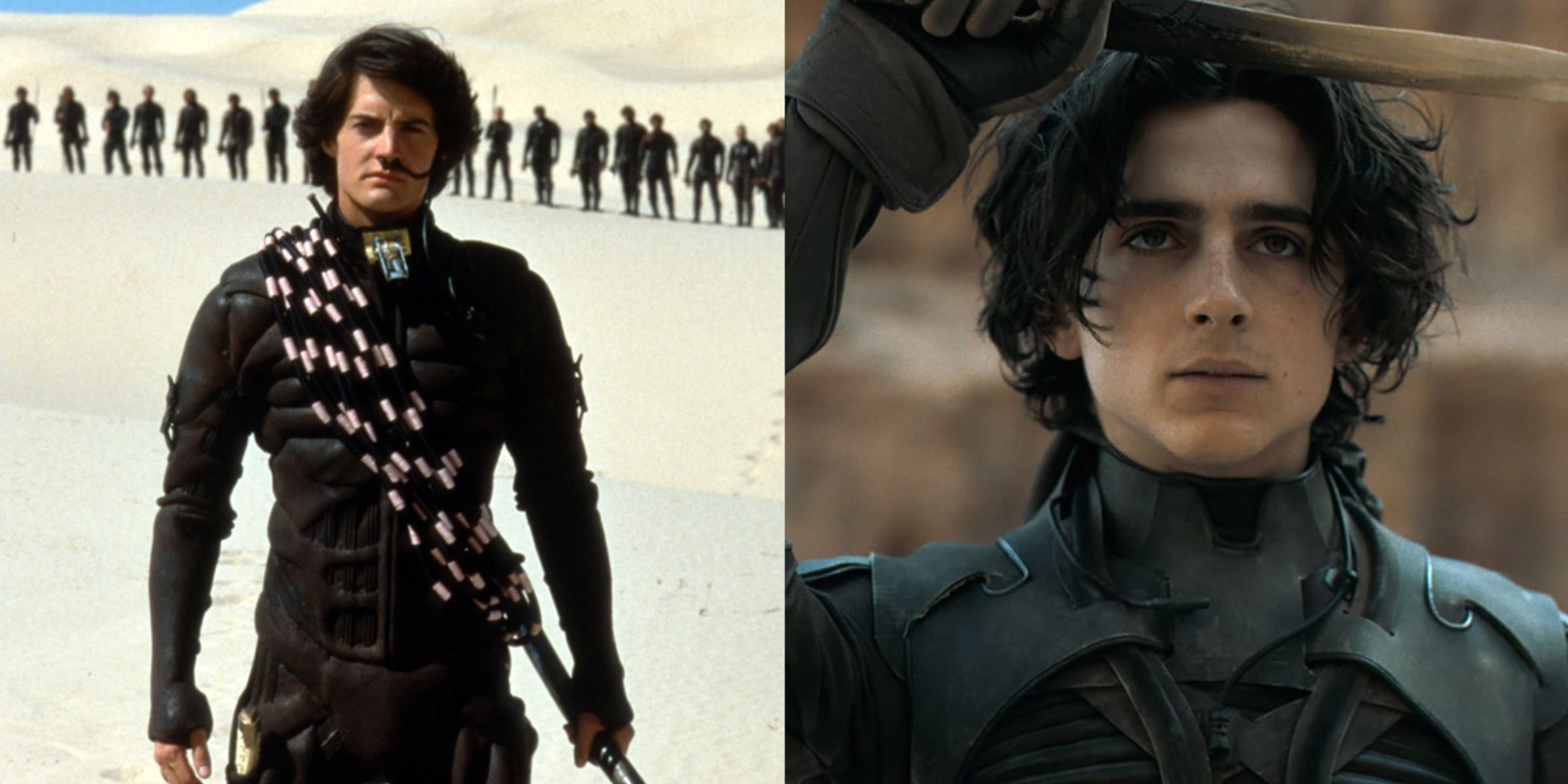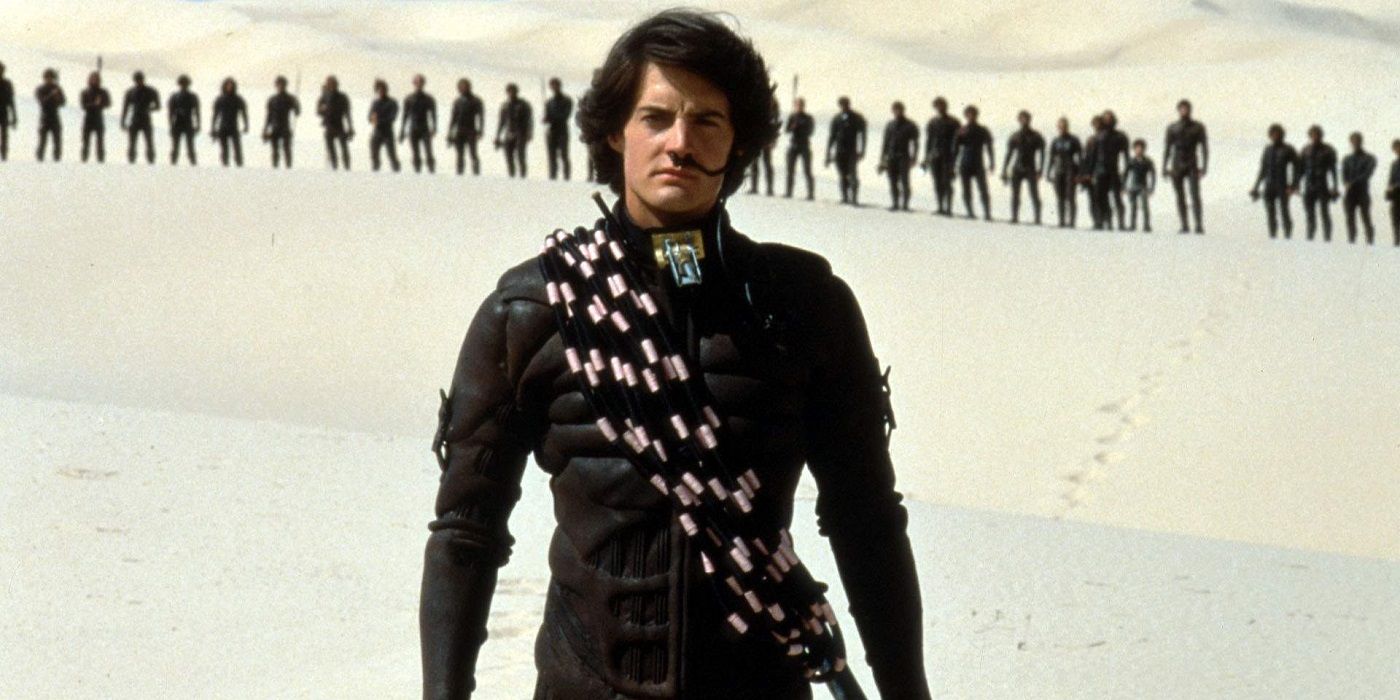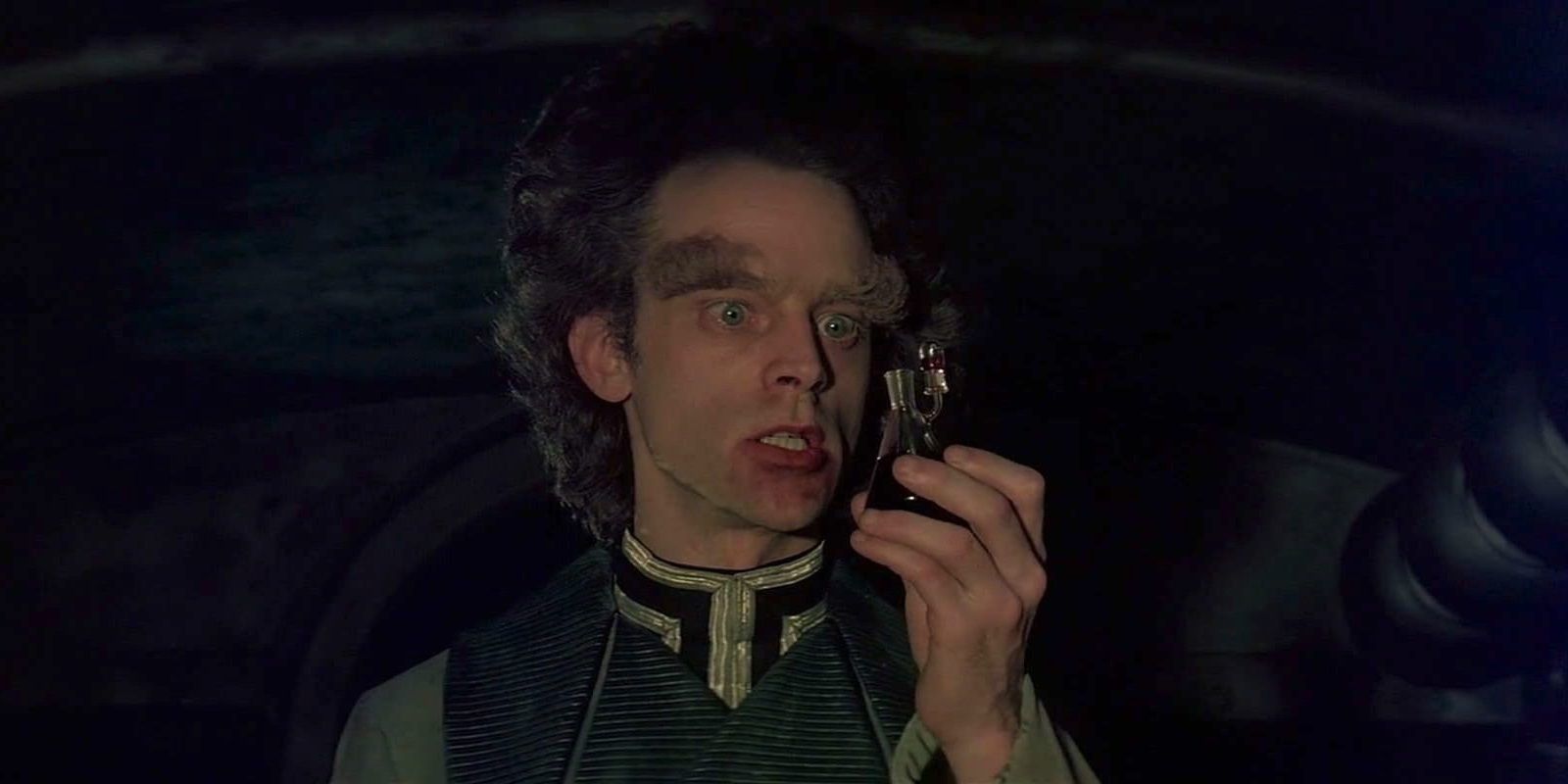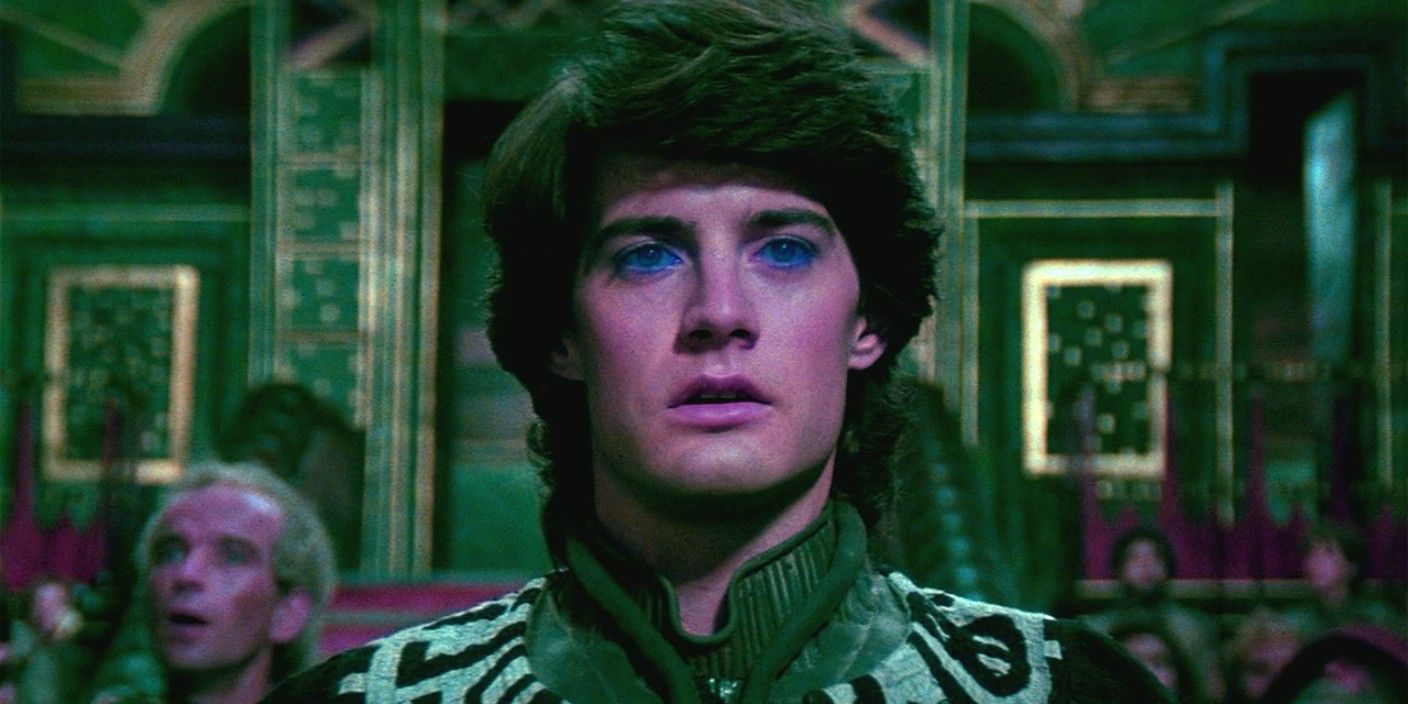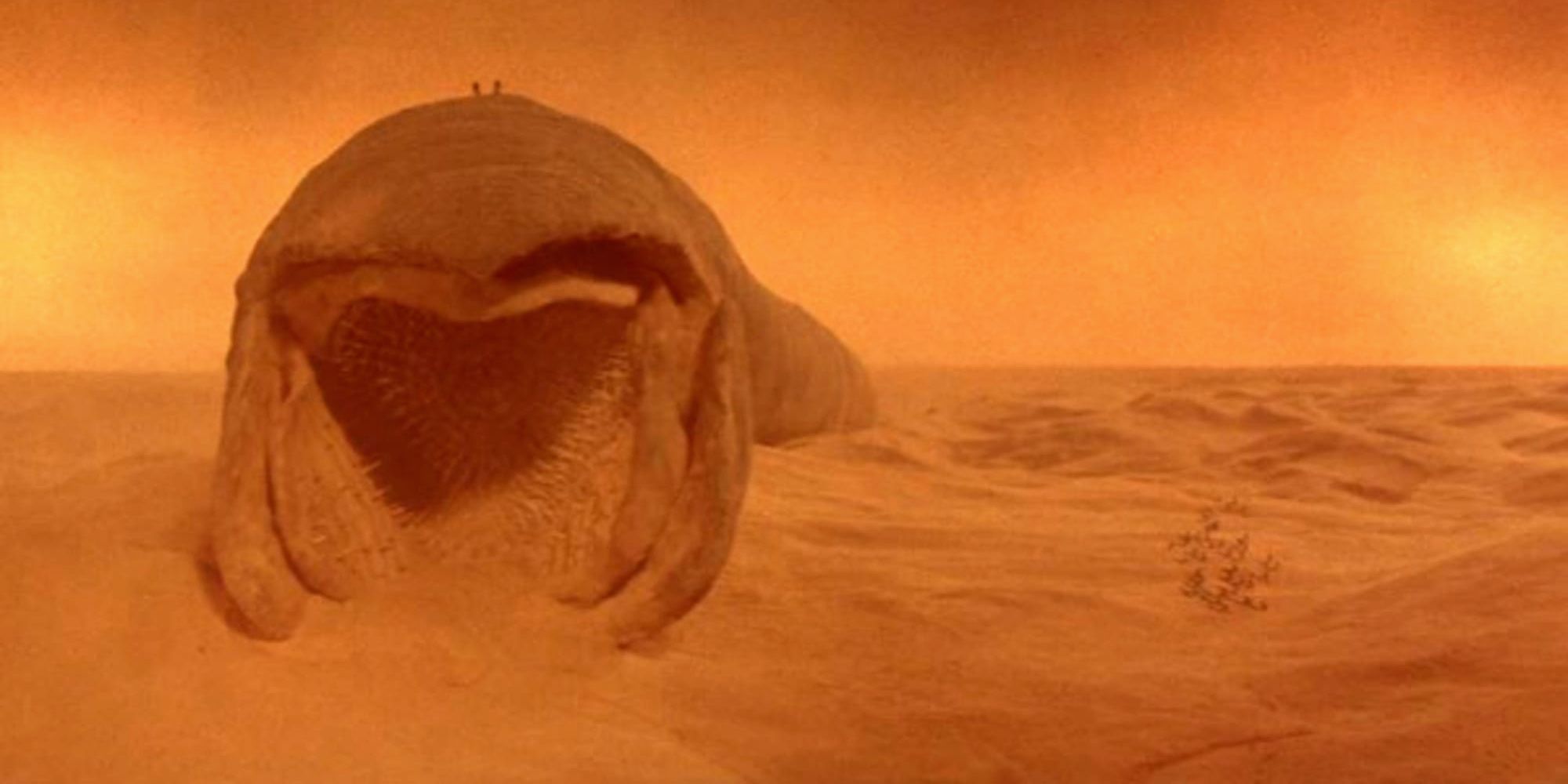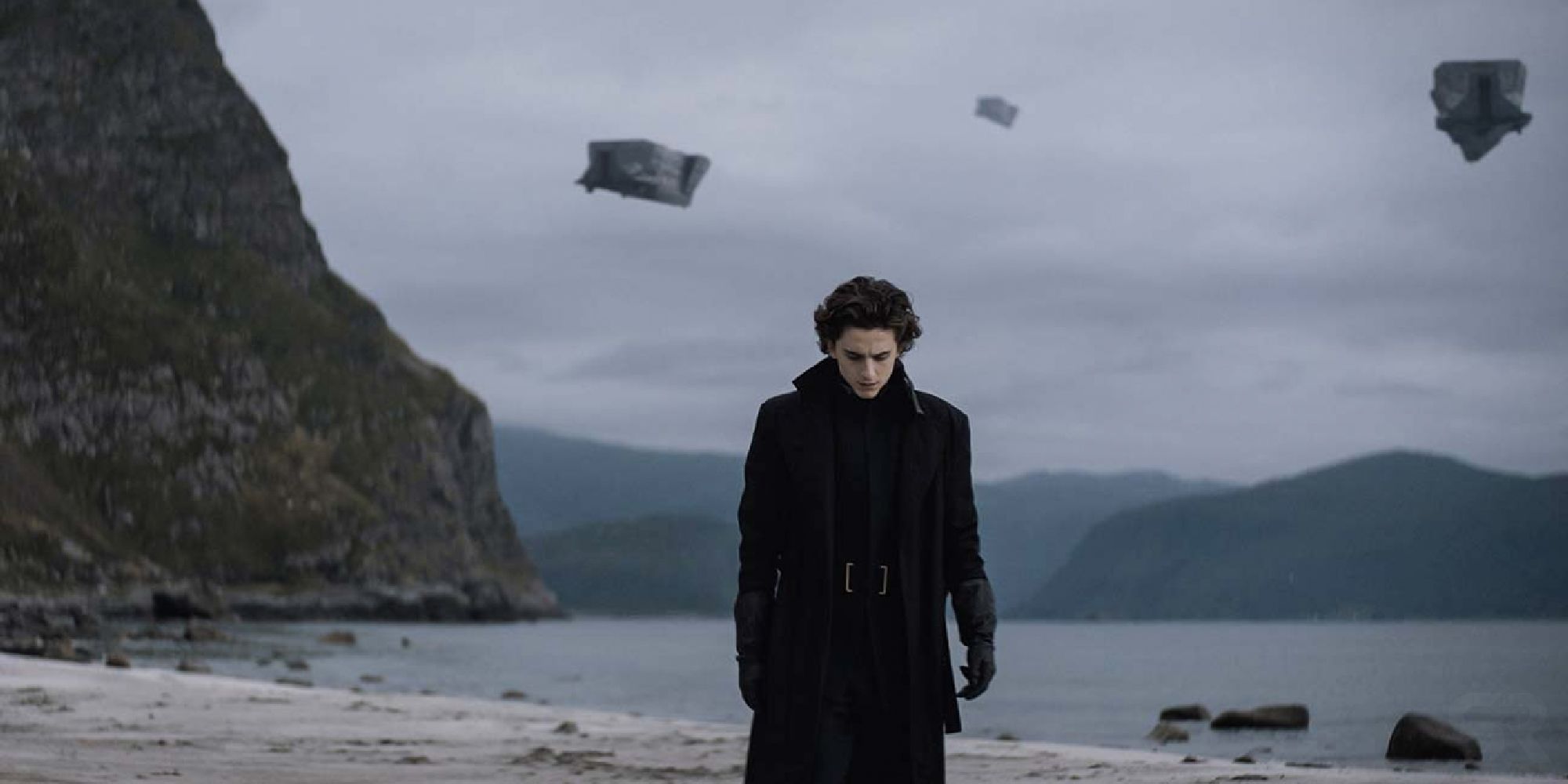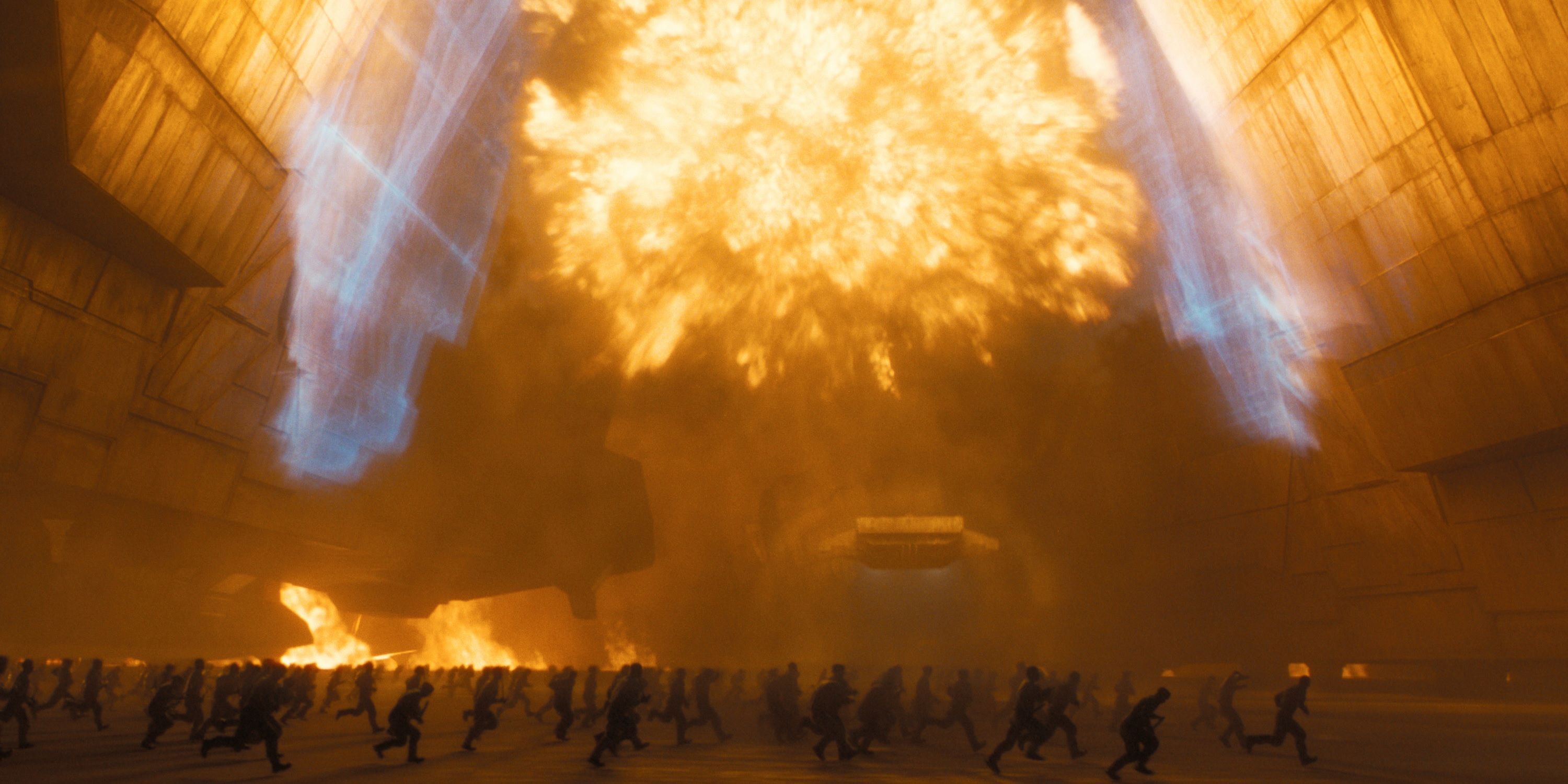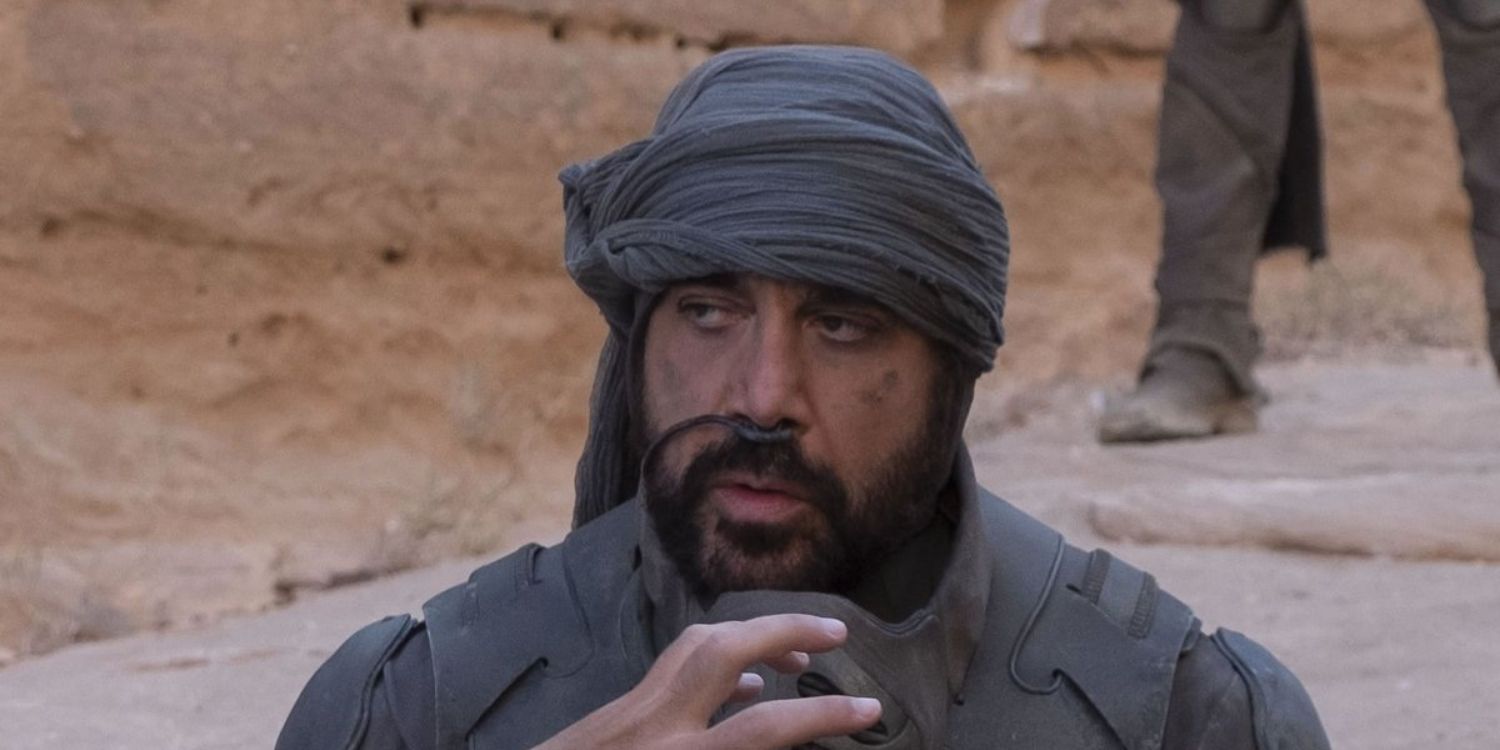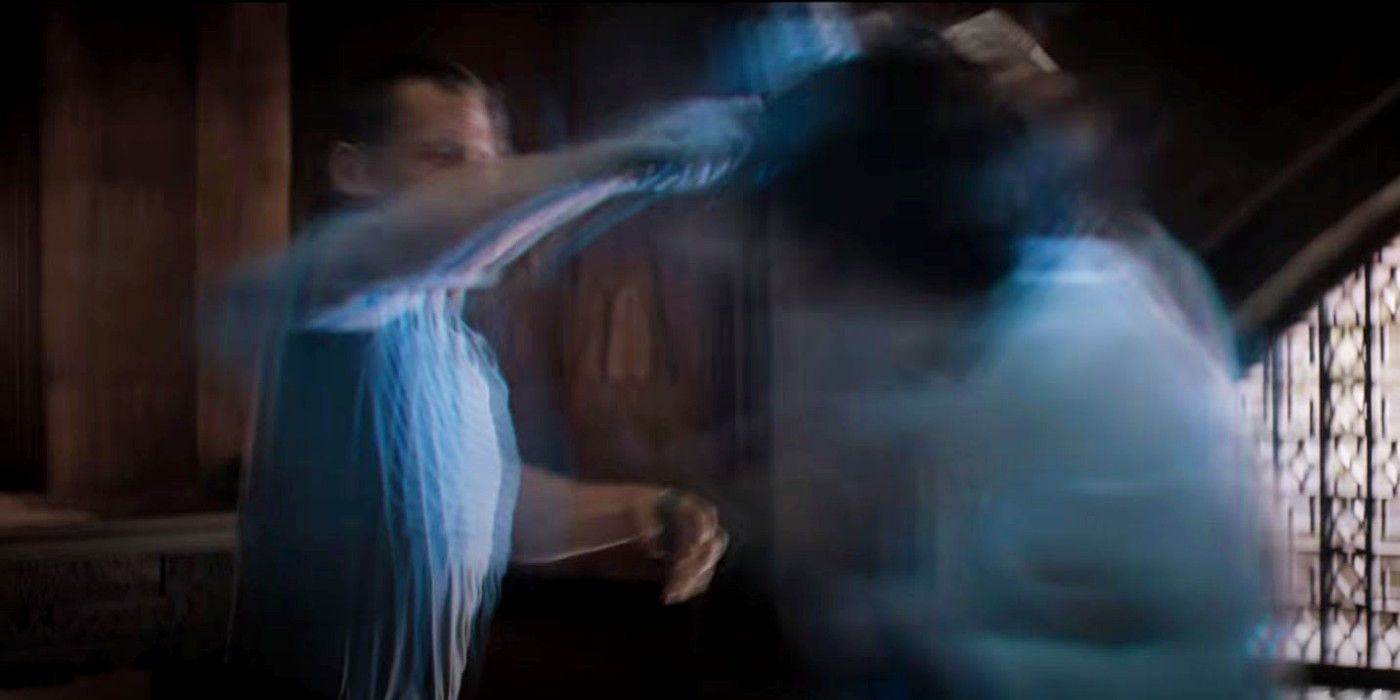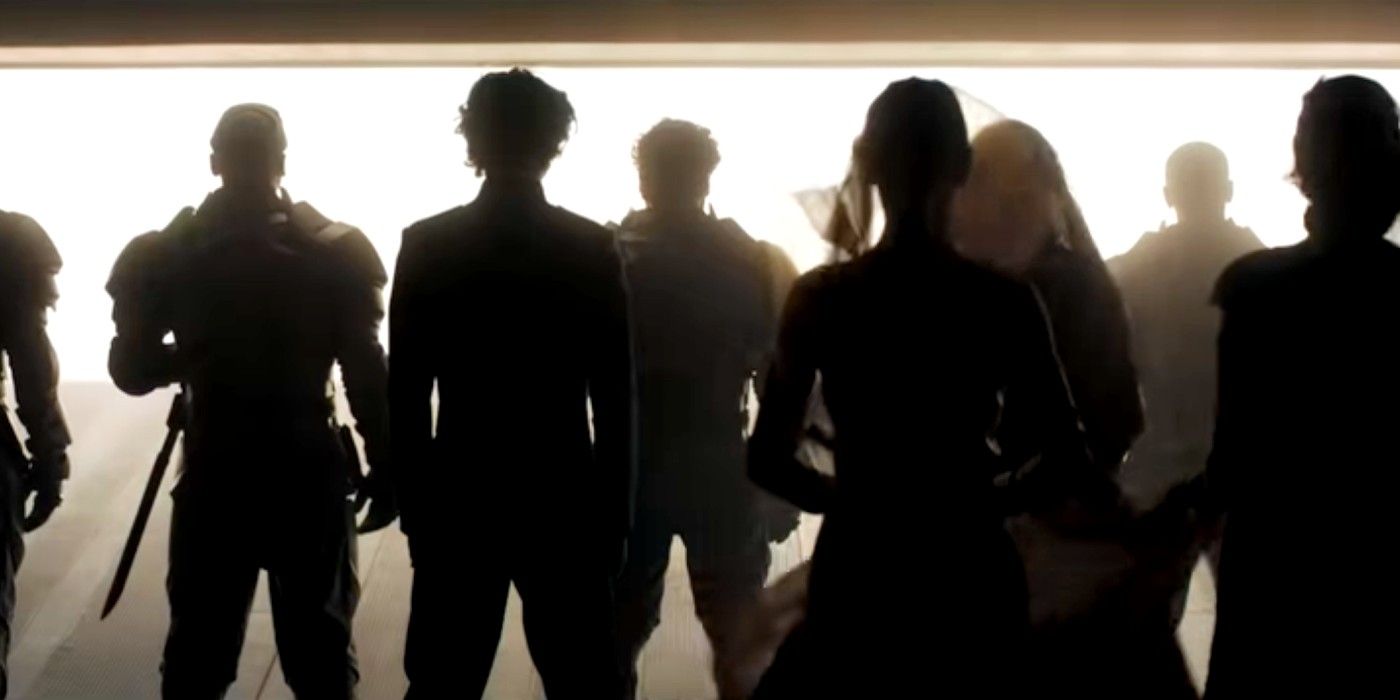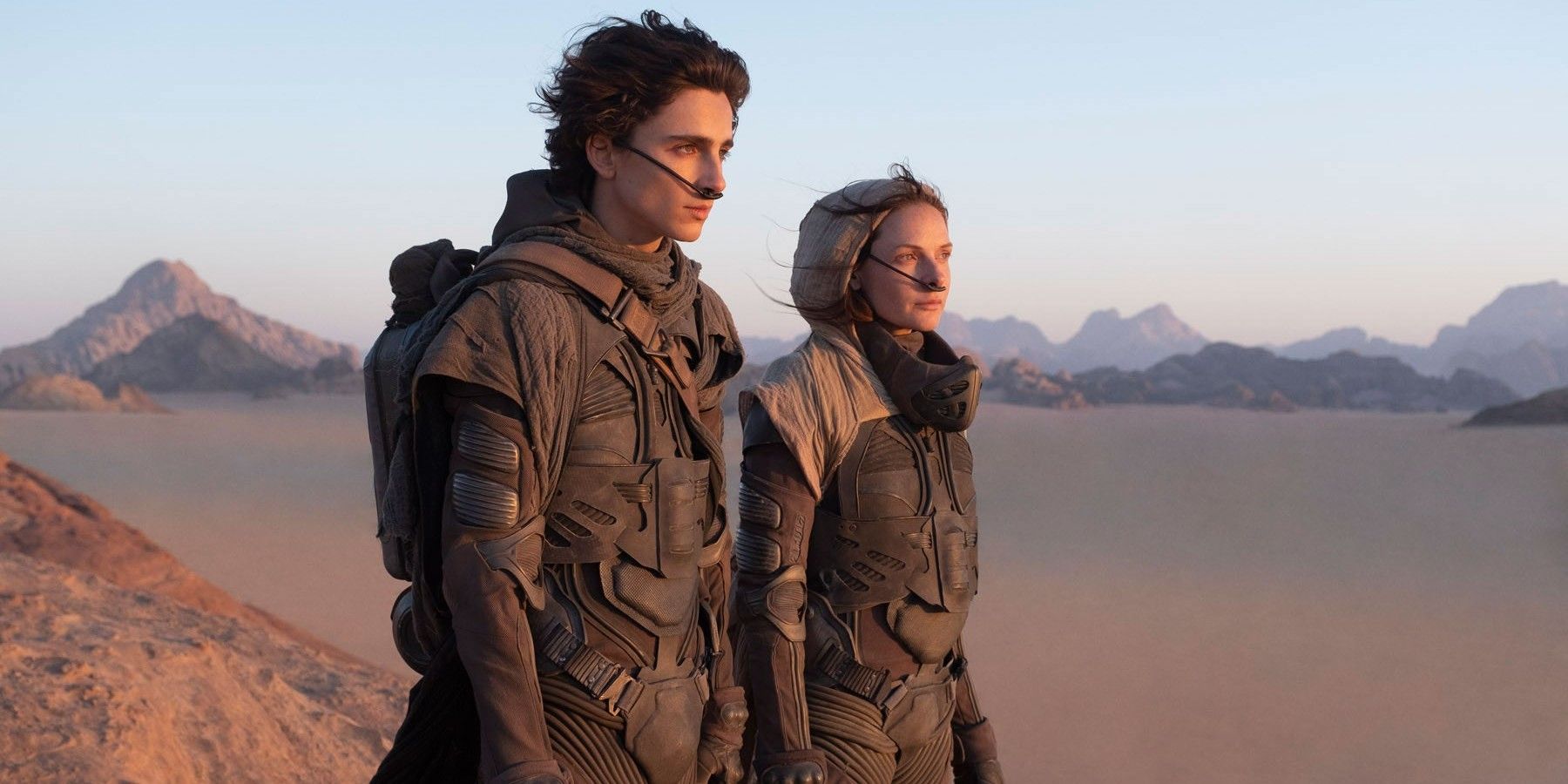When Denis Villeneuve’s re-adaptation of Dune hit theaters last summer, it was instantly praised by critics as a vast improvement over David Lynch’s previous attempt from 1984. Villeneuve gave the seminal Frank Herbert novel the Lord of the Rings treatment, introducing moviegoers to its rich, complex, sprawling universe and its compelling cast of characters with promises of more exciting things to come.
While the 2021 version of Dune is an undoubtedly better film than the 1984 version, Lynch’s movie isn’t a complete disaster. It’s let down by its futile bid to cram the entire Frank Herbert opus into a single film, but at least it’s well-acted and visually stunning.
Things Dune 1984 Got Right
Psychedelic Visuals
The key to visualizing Herbert’s gonzo sci-fi concepts from the Dune books, like a planet full of drug miners getting terrorized by giant worms or a 600lb crime lord bathing in a gloopy dark liquid, is translating the uniquely surreal tone of the prose into uniquely surreal imagery.
Both Villeneuve and Lynch nailed the psychedelic visuals of the Dune-iverse in different ways. Lynch put his first studio-sized budget to good use with expressionistic, every-frame-a-painting cinematography.
A Few Standout Performances
For the most part, the acting in 2021’s Dune is a lot stronger than the acting in 1984’s Dune. The ‘80s version has hammier acting than Star Wars, while the 2021 version has world-class performers like Timothée Chalamet and Stephen McKinley Henderson bringing all kinds of nuance and subtlety to the table.
But the cast of the 1984 version has a few standout actors who give fantastic performances. Brad Dourif gives a delightfully deranged turn as Piter De Vries, the Harkonnen Mentat, while Patrick Stewart brings real Shakespearean heft to the role of Gurney Halleck, one of Paul’s mentors.
The “Voice”
Lynch’s portrayal of the “Voice,” spelled out in voiceover form, is wildly controversial. The prolonged mid-scene closeups of the characters sometimes get a little awkward, but this is arguably a better way to visualize the “Voice” as Herbert describes it on the page than Villeneuve’s use of sign language.
Both of these depictions of the “Voice” have their merits, but Lynch’s version is arguably closer to a visual translation of the source material – and, thanks to some trippy sound design, it’s not just standard voiceover narration.
David Lynch Didn’t Shy Away From The Weirdness
The biggest fear with Hollywood adaptations of seminal works like Dune and Watchmen is that the studio that snaps up the rights will tone down the darkness and edge of the source material in order to appeal to the widest audience possible.
Back in 1984, when the brand of franchise filmmaking that dominates today’s movie industry was still in its infancy, Lynch didn’t shy away from the weirdness of Dune. His adaptation is chock full of gross-out gags.
Things Dune 2021 Did Better
Denis Villeneuve Gave The Story Enough Room To Breathe
Villeneuve’s goal to only adapt the first half of Dune and save the second half for a sequel is one of the main reasons why his version is superior to Lynch’s. Not only was Lynch required to cram Frank Herbert’s entire magnum opus into a single movie; he had to keep the runtime around the tight two-hour mark.
Herbert’s dense source novel left Lynch with so much plot and exposition to get through that he wasn’t able to give the story’s deeper themes a chance to shine. Villeneuve, on the other hand, gave the story plenty of room to breathe, allowing the themes to rise to the surface.
The Scale Of The Action
When it hit theaters amidst a sea of Marvel projects and generic wannabe blockbusters, Dune was criticized for its lack of action. There may not be a big battle sequence every couple of minutes, but there’s still plenty of action in Dune.
Not only does Villeneuve bring a visceral intensity to sequences like House Harkonnen’s attack on Arrakeen and Paul’s ritualistic climactic fight with Jamis; the director captures the vast scope of those set-pieces with sharp cross-cutting and clarity of perspective.
The Acting Is More Nuanced
The acting in the original Dune movie is fine, but the hammy, eccentric performances are too far removed from relatable human behavior for the cast to convince the audience that they’re playing real people.
The actors in the 2021 version, on the other hand, play their roles as realistically as possible, grounding the trippy, futuristic storytelling in a tangible reality. Zendaya brings more depth and pathos to Chani as an expository cameo in 2021 than Sean Young did with a whole supporting role in 1984.
The Holtzman Shields Look Much Better
This is a very minor gripe, but in the Lynch movie, the Holtzman shields (the force-field suits worn by Paul and Gurney during combat training) are hideous. It’s hard to tell what’s going on, because the shields are created by plastering digital clipart-style cubes around the fighters’ limbs and torsos. It’s worse CGI than Tron, which hit theaters two years earlier.
The effects are much, much better in the reboot. This is largely thanks to advances in technology, but Villeneuve’s translucent spandex is better conceived than Lynch’s digital cube-sleeves.
Immersive Cinematography
There’s no doubt that Lynch’s Dune looks great, with visuals that complement the words of Herbert’s source material nicely, but the cinematography of Villeneuve’s version truly transports the audience to Arrakis.
Director of photography Greig Fraser won a much-deserved Oscar for his work on Dune. Fraser recently brought a similarly immersive, atmospheric aesthetic to Matt Reeves’ rain-drenched, neon-lit vision of Gotham City in The Batman.
Breathtaking Musical Score
Like Fraser, Hans Zimmer won an Academy Award for his work on Dune, marking the legendary composer’s second Oscar win for Best Original Score. The 1984 original featured Toto’s first and only film score. Suffice to say, Zimmer’s Dune music is more striking.
As usual, he uses atmospheric noises and a wall of sound to engage the audience with the visuals. Zimmer’s score is just as immersive as Fraser’s cinematography.

